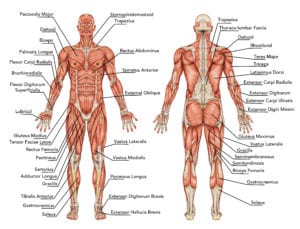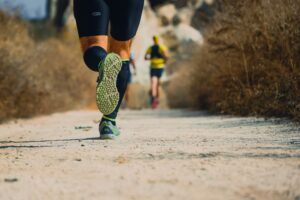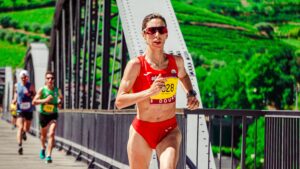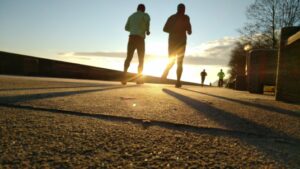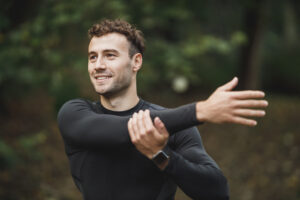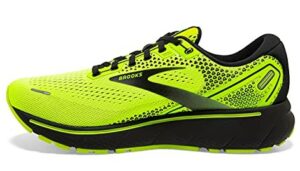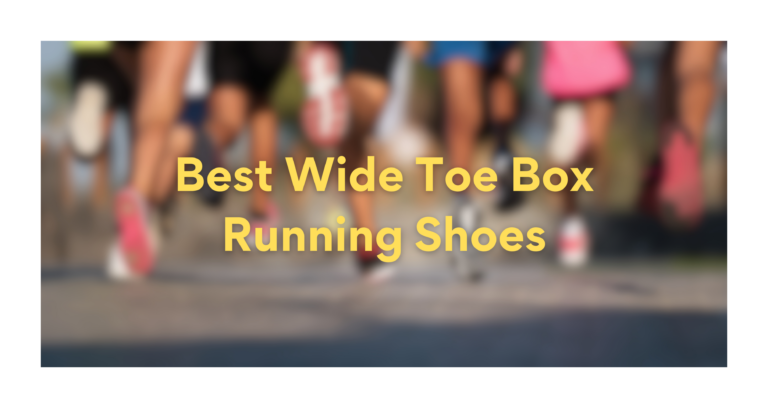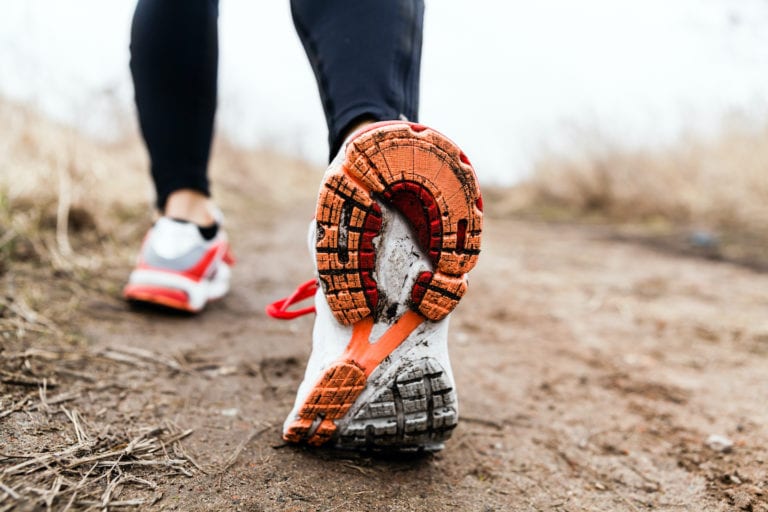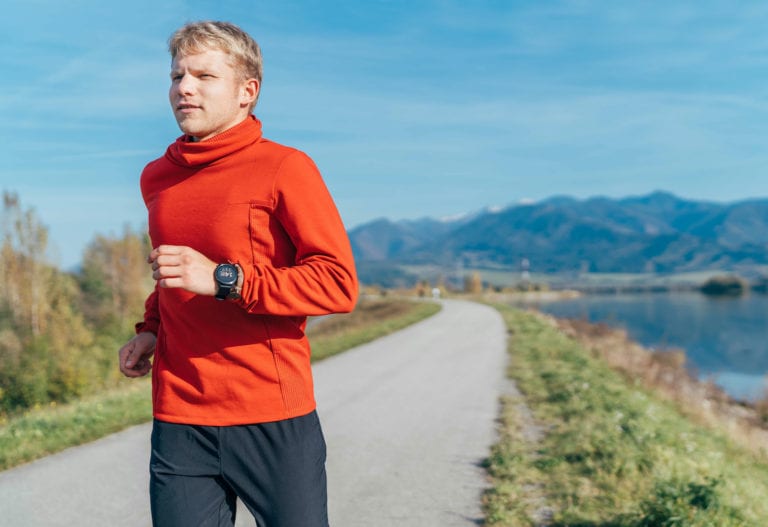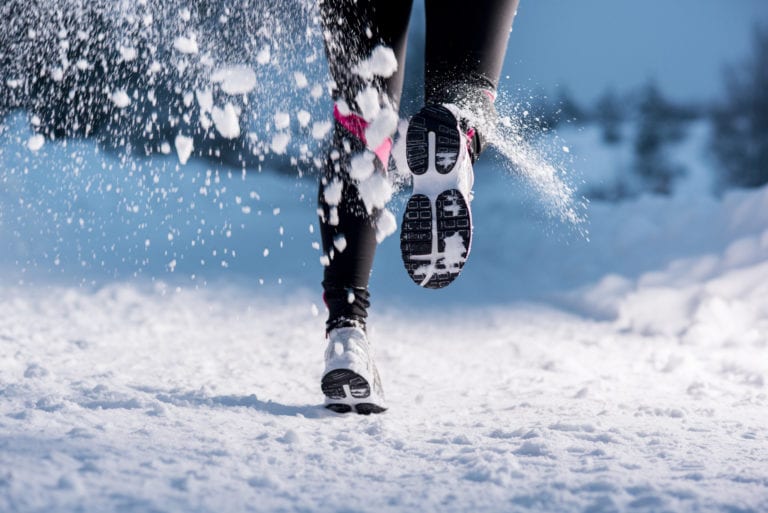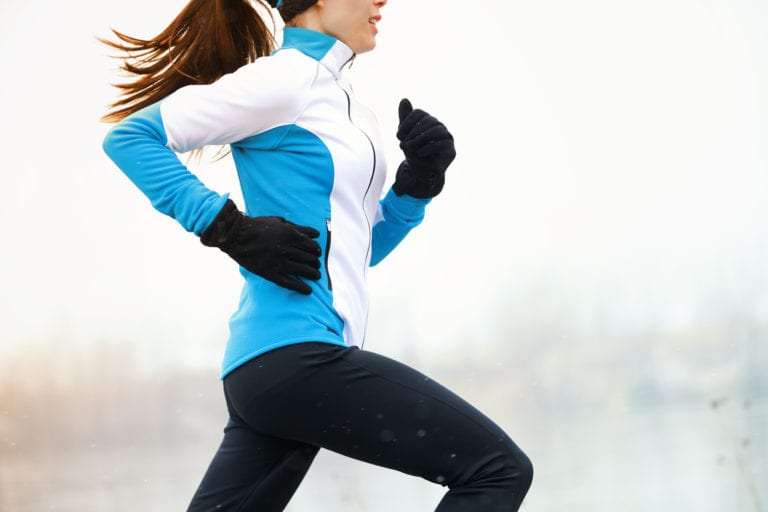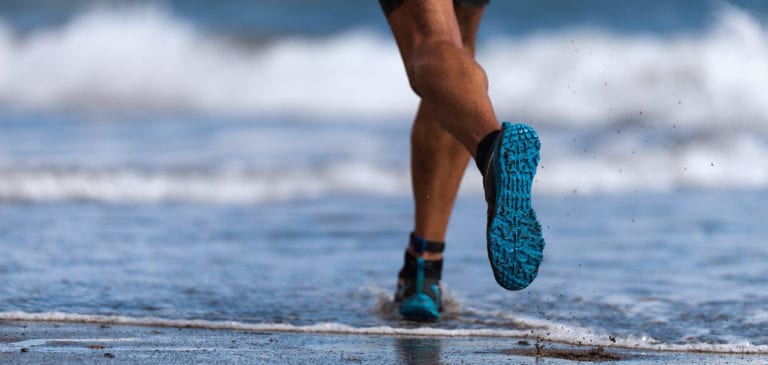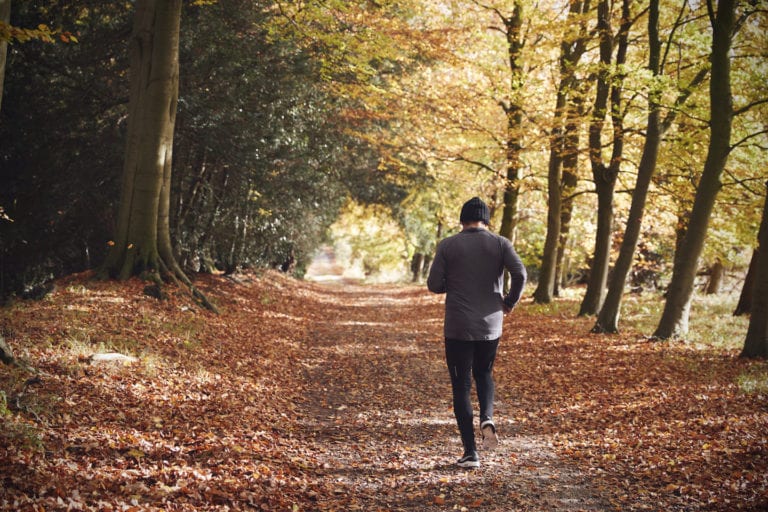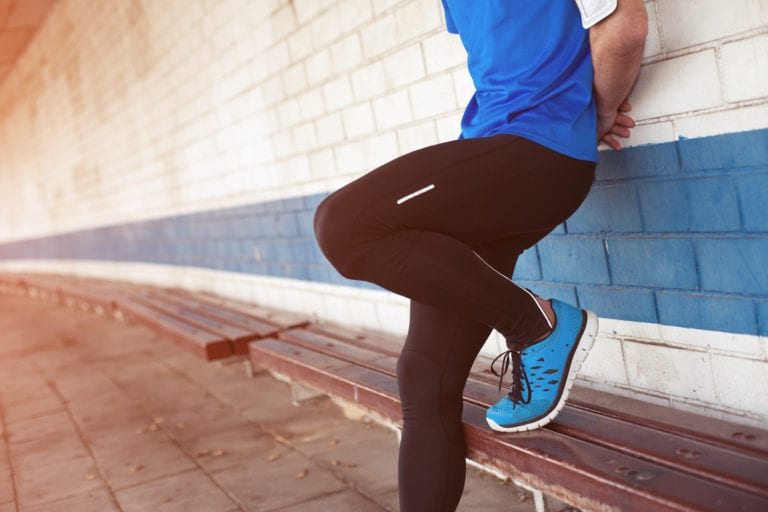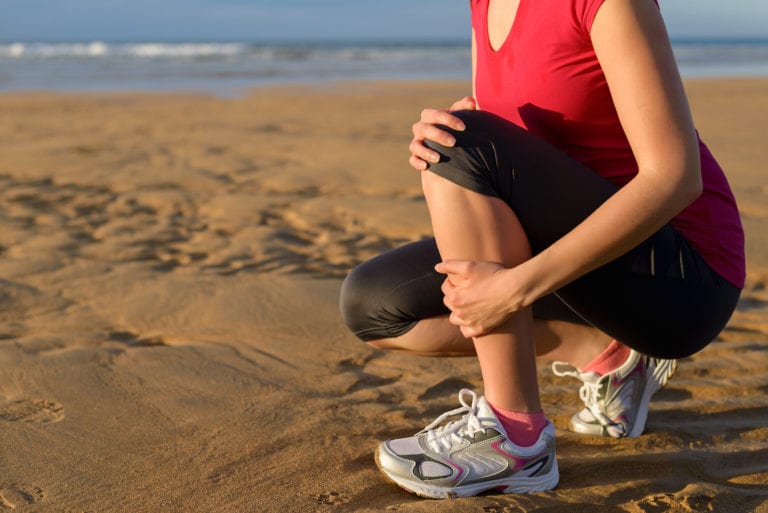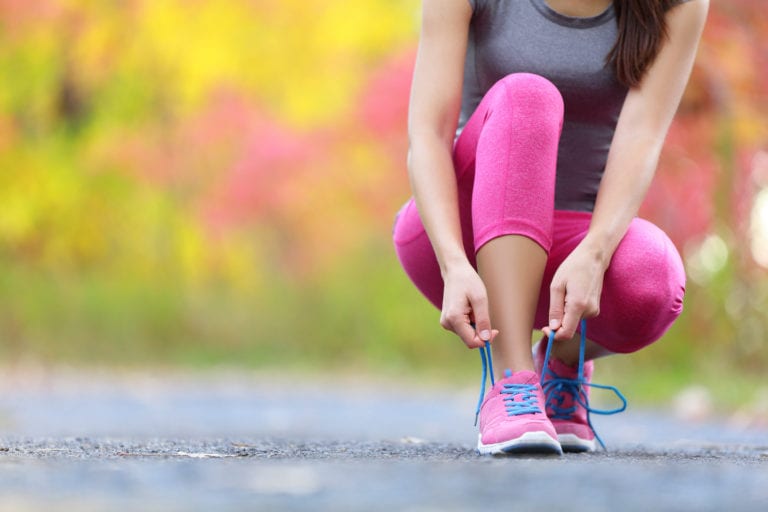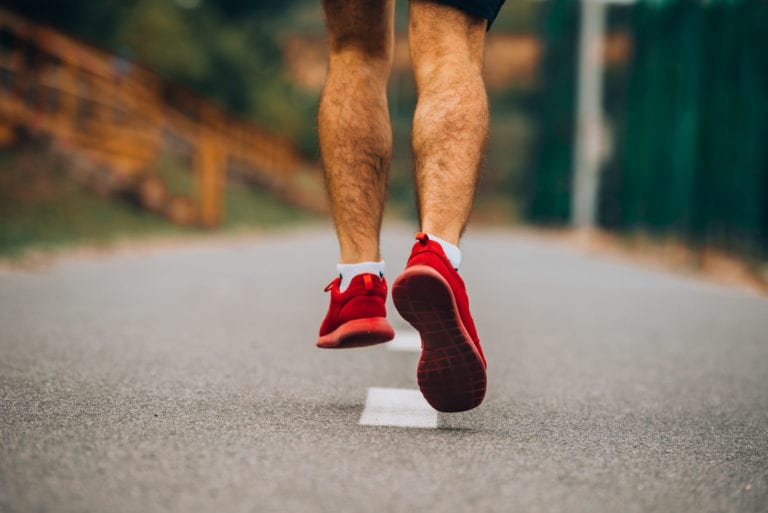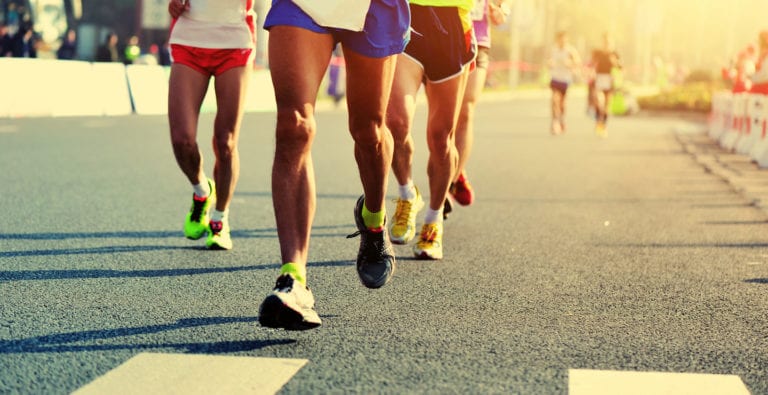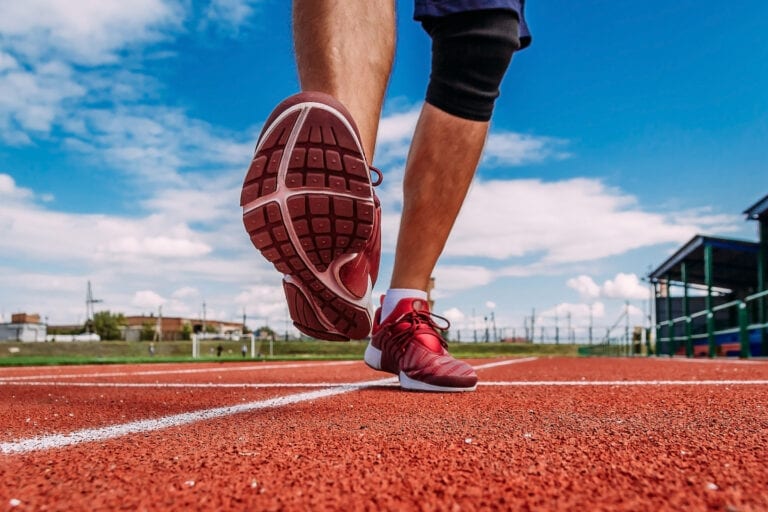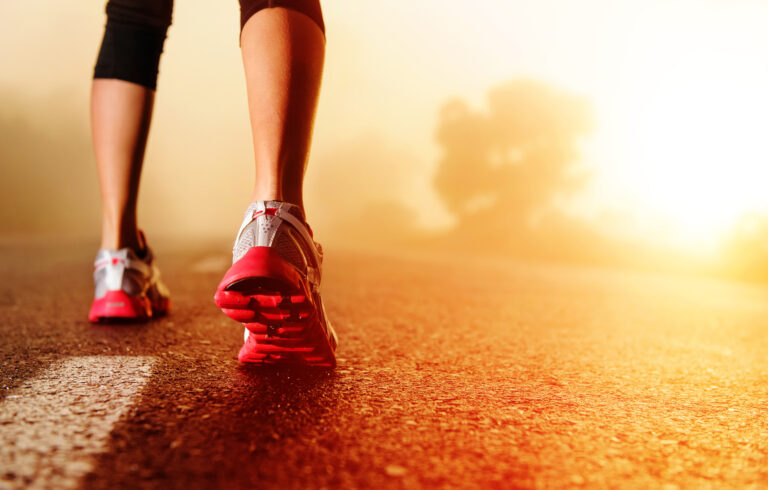As a regular runner, no matter how often you exercise, you’re sure to have come across conversations around stretching and which stretches are best for maintaining your range of motion while keeping you away from injury. Glute stretches are one of the many types of stretches recommended for runners, as they target a major muscle we use with every outing.
What are glute stretches and why are they important for runners? Stretching your glute muscles helps prevent injuries, can relieve pain in other parts of the body, and will help increase your strength and flexibility.
In this article, we’ll cover:
- What are the glutes and how they contribute to your running form;
- Why stretching your glute muscles is important;
- A quick guide to the best way to relieve tight glutes before or after running (or even when not running at all!).
Gluteal muscles and running
Let’s start by having a look at the glutes: located in your butt region, they are powerhouses of explosiveness for your running and they also play a key role in posture and good running and walking form. Roughly speaking, all gluteal muscles have a common origin and are linked to the top part of your legs, towards the front, side, and back, as well as to the hips.
There are four muscles that make up the group: gluteus maximus, gluteus medius, gluteus minimus, and the tensor fasciae latae. When we talk about glute stretches, we refer to each of these, and you should aim to always target all the muscles in your training and stretching.
What role do glutes play in running?
Some say that weak glutes are a runner’s worst enemy, given their important role in our overall movement mechanics. When we run, the glutes hold the pelvis level and steady, avoiding any imbalances around the core area and down the legs.
Given that they are large muscles that can power up your running, especially when it comes to sprinting, glutes are also important for giving you power and speed. This is because glutes are responsible for hip extension and therefore play a huge role in running mechanics.
Many runners suffer from knee injuries because of the repeated strain they put on their body as a result of their running form. For many years, it’s mistakenly been thought that this was caused simply by running – because of the pounding of our bodies, especially on pavement when running on the road. However, a very large proportion of runners develop knee injuries because they’re not being supported enough by their glutes.
The glute muscles keep our legs, knees, pelvis and torso aligned. This creates harmony from your upper body to your feet, avoiding any imbalances or muscle tightness on one side of the body. It also limits side-to-side motion, a culprit for energy waste for a lot of runners. By being more efficient, you can run faster at a higher effort level as a result.
Why do glute muscles get sore?
Tight glutes or soreness in that area can occur for a number of reasons, beginning with the aftermath of working out and DOMS (delayed onset muscle soreness). When muscles are required to work harder than usual or in a different way, there is a level of muscle tissue damage that occurs, which leads to long-term gains, but to short-term discomfort. Therefore, it’s important to stretch all muscles you’ve worked out and ensure adequate refueling as well.
However, a much worse and unexpected source of tightness for your glutes is our everyday lifestyle, including sitting at a desk for a long time. Too much sitting without interruption is linked with gluteal pain and tightness. When you then go out for a run to relieve the stress of work at the end of the day, overly tight glutes can more easily get injured during exercise, especially if you try to do an interval session where you put more pressure on them.
Symptoms of tight glutes
Sometimes, glutes may not feel sore, but they have become tight and are causing other parts of our bodies to show unwanted symptoms. If you suffer from any of the below, glute tightness may be the cause:
- Painful or sore hips;
- Tight hip flexors;
- Lower back pain;
- Tight hamstrings;
- Knee pain;
- Pelvic pain or instability.
Why do glute stretches?
Once you understand the importance of gluteal muscles for running and for general good health, it becomes clear that we need to take care of them as much as possible. Glutes help us run better, walk better, keep our balance and rotate our hips without pain. In order to make the most of what this part of our upper legs can do for us, we need to strengthen them and relieve pain and tightness.
When you sit down for a long period of time – like more than 70% of Americans who have been working from home during the pandemic, for example – your whole frame is compressed, shortening your glutes and leading to them tightening up. This also weakens your glutes and core muscles.
Additionally, when you put pressure on your glutes by running regularly and especially engaging in fast running or sprinting, you’re soliciting the gluteal muscles to a high degree. To help them recover, stretching is an ideal form of care, along with foam rolling and – in the long term – strengthening your muscles through cross training which includes a strength and conditioning program.
Finally, stretching your glutes will help you gain more flexibility, improve your range of motion and overall mobility. Through a consistent stretching routine, you will contribute to reducing your risk of injury from running or any other activity.
How to stretch your glutes
Here are some easy ways to stretch your glutes at home or at the gym. These are static stretches, which means you can hold the position for a longer time and slowly work on increasing your range through deep breathing and gradually pushing within the stretch. We recommend doing these when you’re well warmed up, so after a run or after you’ve done some dynamic stretches for the whole body to get your muscles warm and your blood flowing through.
Figure of four stretch
There are several ways to do this stretch, depending on your starting position:
- Begin by sitting on a chair and raise your left leg, placing your left ankle on your right thigh, just above the knee.
- Keep your upper body straight and slowly bend forward, feeling a stretch in your left glute.
- Hold this for 30 seconds, breathing deeply.
- Return to the start and repeat with the other leg.
- Alternatively, you can do a standing figure of four where you place your ankle on the thigh in the same way, while moving your hips down into a squat position. This requires a bit more stability so should be attempted only if you feel that you can hold yourself up in this position to begin with.
- Finally, you can create a figure of four while sitting down. In that position, you keep your right foot on the floor with your knee bent, while bringing your left ankle to rest against your right thigh, above the knee, as before.
- Keep the stretch for 30 seconds.
- For a deeper stretch, try pushing your left knee outwards.
Seated twist
Start off sitting down with both legs stretched out in front of you. Place your left arm behind you and bring your left leg over your right, so that your left foot rests on the floor near your right knee. With your right arm stretched downward, over your left knee, palm open, start pushing your left knee inward while twisting your upper body.
Hold this position for 30 seconds then move to the other side. This is a great stretch for your whole torso.
Downward facing dog

Adopt this yoga pose to strengthen your core and upper body and stretch glutes, hamstrings, calf muscles and the shoulders all at the same time.
- Start in a push-up position with hands shoulder-width apart and legs together, then straighten your body and engage your core.
- Push your hips up and back, trying to form a V-shape upside down.
- Slightly bend your knees and place your head between your shoulders, aligned with your spine.
- Try to move your feet flat on the floor, pushing your heels back. Progress gradually, however – it’s okay to have your knees slightly bent and your heels off the floor at the start.
- Hold for 20-30 seconds, then release and try again after a short break.
Half pigeon
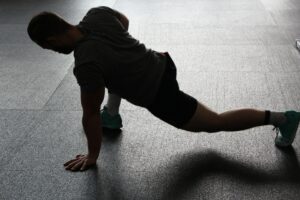
Another yoga pose with glute benefits, this one is a little more difficult, so take your time progressing to it.
Your starting position can be a downward facing dog, from where you take your left leg forward into a lunge stretch.
- Move your left foot toward the center of the mat, then lower your left knee towards the mat.
- Your right leg should be resting on the floor behind you.
- Untuck your toes and maintain an upright position with your torso.
- Hold for 30 seconds, then slowly lift your knee up, move the left foot to the side and back into lunge, then go back to downward facing dog and switch sides.
In addition to these recovery stretches, you should also try to activate your glutes before running with some side-to-side leg swings, glute bridges, lateral walks with a band around your toes and some foam rolling. This way, your tight muscles from a day spent sitting down will be ready to spring into action.
Maintaining strength and stability through caring for your glutes
Taking care of your glute muscles by adopting a simple stretch routine before and after running, as well as stretching lightly several times a day to prevent tight muscles, will help prevent injuries and make you a better and stronger runner in the long term. In addition to the glutes, runners should add quad stretches, a focus on the calf muscles during downward facing dog, and shoulder stretches a few times a day to keep your body as loose and comfortable as possible.
Remember, for every one of these moves, you should aim for a comfortable stretch and progress gradually, to avoid any muscle tear or pull. Increased glute flexibility will help keep you healthy, but it needs to be achieved through multiple stretching sessions and without pushing too much, too quickly.

